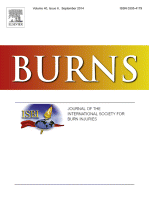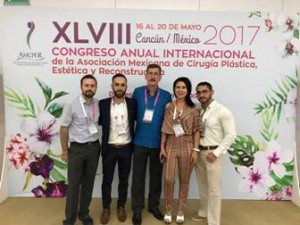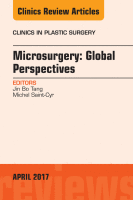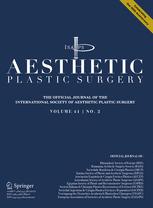Knowlin, L. et als.
Burns, 2016-11-01, Volúmen 42, Número 7, Pages 1433-1438
 The ability to better prognosticate burn injury outcome is challenging and historically, most center use the Baux or revised Baux score to help prognosticate burn outcome, however, the weighted contribution of comorbidity on burn mortality has traditionally not been accounted for nor adequately studied. We therefore sought to determine the effect of comorbidities, using the Charlson comorbidity index (CCI) on burn mortality.
The ability to better prognosticate burn injury outcome is challenging and historically, most center use the Baux or revised Baux score to help prognosticate burn outcome, however, the weighted contribution of comorbidity on burn mortality has traditionally not been accounted for nor adequately studied. We therefore sought to determine the effect of comorbidities, using the Charlson comorbidity index (CCI) on burn mortality.

 En este artículo se presenta un heterogéneo conjunto compuesto por 30 prototipos nasales, seleccionados deliberadamente 10 que presentaban perfil con óptima definición del dorso y piel de grosor intermedio con el fin de investigar sistemáticamente, en estos últimos, al segmento inicial del borde superior de la rama alar externa y al tramo distal del borde anterior del cartílago triangular. Mediante disecciones rutinarias, se realizó el análisis con material de individuos adultos, de ambos sexos y raza blanca, previamente formolizado.
En este artículo se presenta un heterogéneo conjunto compuesto por 30 prototipos nasales, seleccionados deliberadamente 10 que presentaban perfil con óptima definición del dorso y piel de grosor intermedio con el fin de investigar sistemáticamente, en estos últimos, al segmento inicial del borde superior de la rama alar externa y al tramo distal del borde anterior del cartílago triangular. Mediante disecciones rutinarias, se realizó el análisis con material de individuos adultos, de ambos sexos y raza blanca, previamente formolizado. This article presents the authors’ understanding and experience concerning anatomic studies and clinical methods in microsurgical hand reconstruction. The 4 parts of this article include anatomic study of the hand for developing new flaps; application of miniflaps from the hand, including clinical experience with 8 unique flaps in the hand; anatomic and clinical considerations concerning several flaps from other parts of the human body and the experience with vascularized free toe joint transfer.
This article presents the authors’ understanding and experience concerning anatomic studies and clinical methods in microsurgical hand reconstruction. The 4 parts of this article include anatomic study of the hand for developing new flaps; application of miniflaps from the hand, including clinical experience with 8 unique flaps in the hand; anatomic and clinical considerations concerning several flaps from other parts of the human body and the experience with vascularized free toe joint transfer. The increasing variety of breast implants has led to their classification into «profile» types to guide implant cataloguing and selection. Implant «profile» describes the overall silhouette of the implant. It represents a permutation of all 3 dimensions of the implant: base diameter, projection, and volume. Implant «profile» is not the same as implant projection. Implant projection is a quantifiable linear measurement of the anterior-posterior dimension of the implant, whereas implant «profile» is a vendor-driven assessment that currently lacks universal standardization. Until «profile» assessments are standardized across vendors, it behooves us to be cognizant of their limitations as primary variables used to guide implant selection.
The increasing variety of breast implants has led to their classification into «profile» types to guide implant cataloguing and selection. Implant «profile» describes the overall silhouette of the implant. It represents a permutation of all 3 dimensions of the implant: base diameter, projection, and volume. Implant «profile» is not the same as implant projection. Implant projection is a quantifiable linear measurement of the anterior-posterior dimension of the implant, whereas implant «profile» is a vendor-driven assessment that currently lacks universal standardization. Until «profile» assessments are standardized across vendors, it behooves us to be cognizant of their limitations as primary variables used to guide implant selection. Necrotizing fasciitis (NF) is a rare, potentially fatal, infective complication that can occur after surgery. Diagnosis is still difficult and mainly based on clinical data. Only a prompt pharmacological and surgical therapy can avoid dramatic consequences. There are few reports regarding NF as a complication after aesthetic surgical procedures, and a systematic review still lacks.
Necrotizing fasciitis (NF) is a rare, potentially fatal, infective complication that can occur after surgery. Diagnosis is still difficult and mainly based on clinical data. Only a prompt pharmacological and surgical therapy can avoid dramatic consequences. There are few reports regarding NF as a complication after aesthetic surgical procedures, and a systematic review still lacks. Within a surgical department, communication is of the essence. Provided and adapted exchange between practitioners is the key to achieve premium patient care and optimize therapeutic strategies. With the use of smartphones, instant messaging applications face a growing popularity in both private and professional sectors, serving as a secure, efficient, and economical communication tool by optimizing transmission and data usage within teams.
Within a surgical department, communication is of the essence. Provided and adapted exchange between practitioners is the key to achieve premium patient care and optimize therapeutic strategies. With the use of smartphones, instant messaging applications face a growing popularity in both private and professional sectors, serving as a secure, efficient, and economical communication tool by optimizing transmission and data usage within teams.






 Sitio web publicado el
Sitio web publicado el
Los lectores comentan